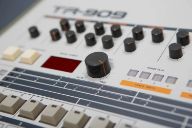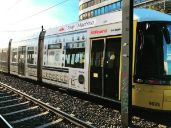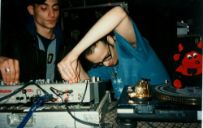When the Beat Crossed the Ocean
When techno and the TR-909 migrated across the Atlantic to the European club scene, cities like Berlin and Manchester welcomed them with open arms. The TR-909 experienced major commercial success with songs like Pump Up The Jam that also showed the machines compatibility with other genres.
Similar to Detroit, Berlin was no stranger to political upheaval as the Cold War had ended and the Berlin Wall fell in 1989. East Berlin was a new world to explore for West Berliners, and the post-industrial, abandoned buildings and factories created an environment similar to Detroit for techno music to blossom. Some writers say that the re-unification of Berlin occurred through the common language of techno. Given that techno was the common language, Detroit DJs visited Berlin throughout the 90s and played sets at the Tresor club, Berlin’s first techno-only club, and collaborated with many German DJs. [Gook 2016]
However, as is the case with any movement, the sounds of techno brought along by the TR-909 birthed a new movement in Berlin known as raving. Rave culture, first seen in 1990, became heavily intertwined with the consumption of ecstasy (MDMA) at techno events. In comparison, the Detroit scene throughout the 80s and 90s had a strict ‘no-drugs’ policy and people danced on water and sugary drinks. Whether or not this was solely due to the Reagan Era drug policies or the mindset of the people to escape their reality without the use of drugs, we can see a clear difference in the two contexts. This is especially the case as in the last 30 years, the associations between techno music and the consumption of drugs have been cemented into place.
In Europe, the TR-909 experienced commercial success as well and featured on the popular ‘Pump Up The Jam’. This indicated the beginning of the commercialization of electronic music. Over the next 30 years, Berlin and the rest of Europe took the Detroit style and made it their own, so much so that electronic music became more recognized as a European phenomenon with white, cis, male DJs, even though its origins lay in black and LGBTQ+ culture. Berlin, for example, is presented as the electronic music capital of the world. The sounds of the TR-909 that represented a music of protest for African-Americans were thus used in an entirely different context and associated with different movements.
Detroit DJs Mike Banks, Jeff Mills, DJ Rolando, and many more saw the dilution of the movement that had started in Detroit and attempted to take back the sound with their music collective known as ‘Underground Resistance’. They were especially frustrated by the fact that techno had become associated with drugs. Many celebrated the return of Detroit techno, yet by this point techno had already spread too far to be reined in.




